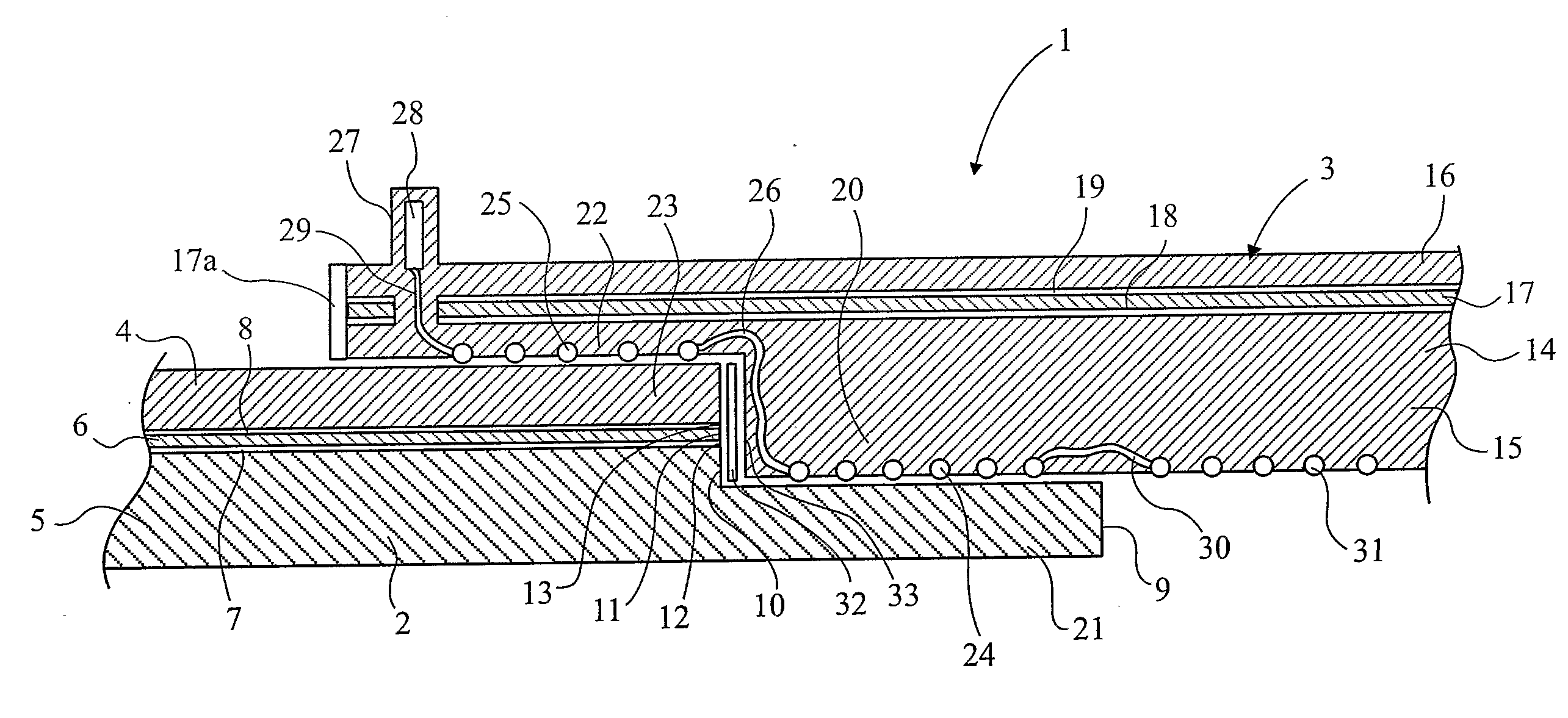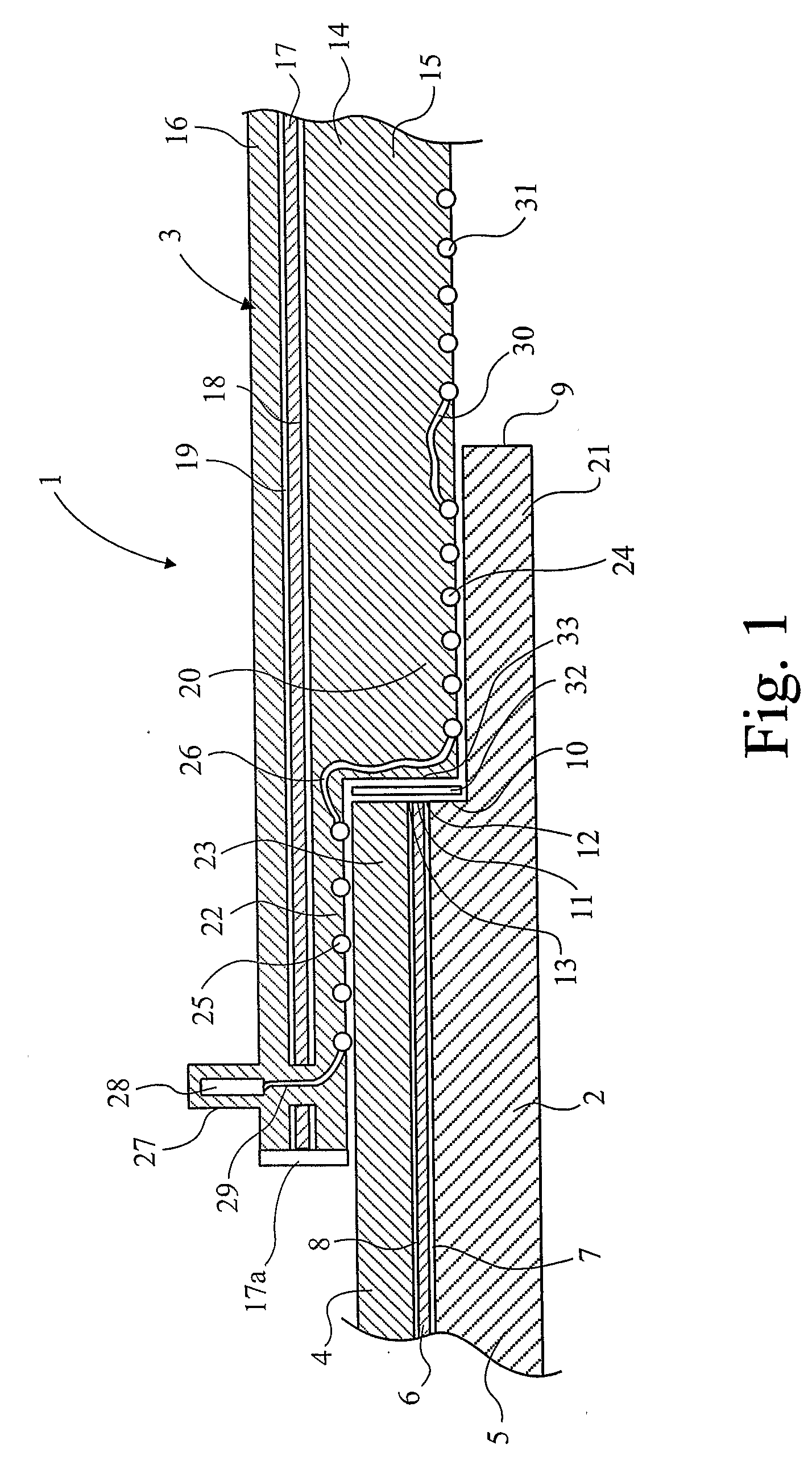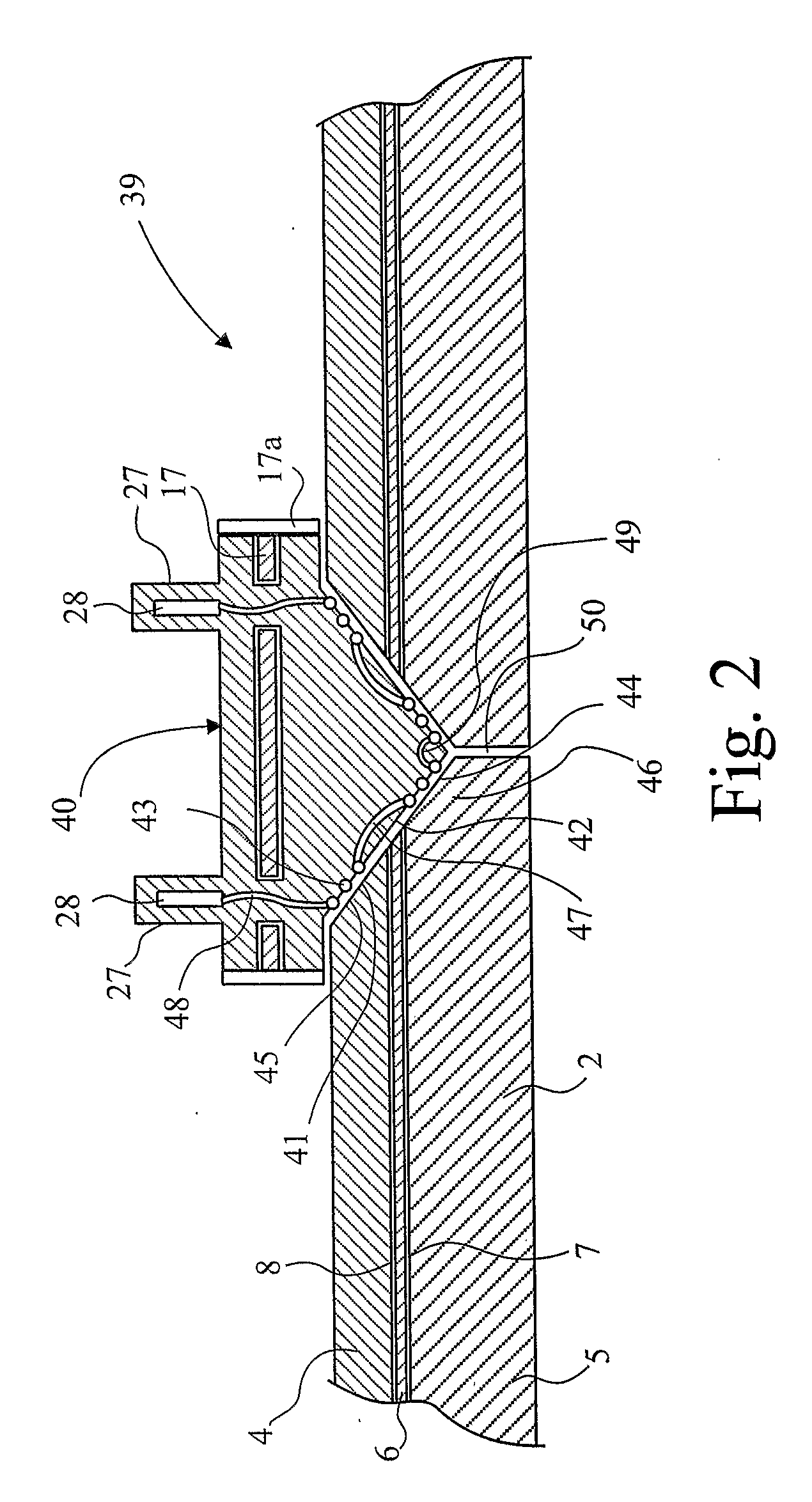Electrofusion fitting for a composite pipe
a technology of electrofusion and composite pipes, applied in the direction of hose connections, pipe elements, mechanical equipment, etc., can solve the problems of metal barrier layer, potential delamination problems, and certain complications
- Summary
- Abstract
- Description
- Claims
- Application Information
AI Technical Summary
Benefits of technology
Problems solved by technology
Method used
Image
Examples
Embodiment Construction
[0037]Referring firstly to FIG. 1, there is shown an electrofusion joint, illustrated generally at 1, comprising a composite pipe 2 and an electrofusion in-line coupler illustrated generally at 3. The composite pipe comprises an outer plastics layer 4, an inner plastics layer 5 and an aluminium barrier layer 6. The aluminium barrier layer 6 is bonded to the inner and outer plastics layers by adhesive layers 7 and 8 respectively. A portion of the cut end 9 of the pipe is cut back in order to provide a step or abutment 10, which includes the exposed edges 11, 12 and 13 of the aluminium barrier layer 6, and the adhesive layers 7 and 8 respectively.
[0038]The electrofusion coupler 3 comprises a body 14 comprising an inner fusible plastics layer 15, an outer plastics layer 16 and an aluminium barrier layer 17. The aluminium barrier layer is bonded to the inner and outer plastics layers of the body 14 by adhesive layers 18 and 19 respectively. The body 14 of the electrofusion coupler has a...
PUM
| Property | Measurement | Unit |
|---|---|---|
| Diameter | aaaaa | aaaaa |
| Electrical resistance | aaaaa | aaaaa |
| Metallic bond | aaaaa | aaaaa |
Abstract
Description
Claims
Application Information
 Login to View More
Login to View More - R&D
- Intellectual Property
- Life Sciences
- Materials
- Tech Scout
- Unparalleled Data Quality
- Higher Quality Content
- 60% Fewer Hallucinations
Browse by: Latest US Patents, China's latest patents, Technical Efficacy Thesaurus, Application Domain, Technology Topic, Popular Technical Reports.
© 2025 PatSnap. All rights reserved.Legal|Privacy policy|Modern Slavery Act Transparency Statement|Sitemap|About US| Contact US: help@patsnap.com



